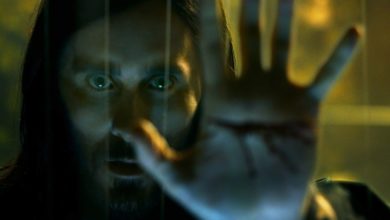There’s a Monkeypox Vaccine. But Not Everyone May Need It

CThe number of cases of monkeypox continues to increase worldwide. This raises concerns about the safety and effectiveness for people. The World Health Organization has reported that 92 cases of monkeypox have been identified in 12 countries. Another 28 cases remain under investigation. What alarms public health officials about the recent outbreaks is that monkeypox is generally not common or known to circulate in these nations; it’s endemic in parts of central and western Africa, but not in the European and North American nations—including the U.S.—that are currently seeing an uptick in infections. On May 18, the U.S. reported its first ever case in Massachusetts. Officials from the U.S. Centers for Disease Control and Prevention (CDC), said that they are working closely with the state health departments of New York, Florida and Utah in investigating four more possible cases.
There is a monkeypox vaccine that has been approved and proven effective. Are Americans required to be vaccinated against monkeypox?
The monkeypox vaccine
Bavarian Nordic, a Danish company, created the Jynneos vaccine. The vaccine contains a live virus of smallpox that cannot reproduce in the body and can cause infection. However, it is able to activate the immune system to fight both smallpox or monkeypox viruses. Studies conducted on people in Africa where the virus is known for years show that two doses (28 days apart) of the vaccine are effective at protecting them from monkeypox. The vaccine was approved in 2019 by the U.S. Food and Drug Administration to protect against smallpox and monkeypox.
Americans don’t routinely get vaccinated against either disease. In November 2021 the CDC’s Advisory Committee on Immunization Practices (ACIP), considered whether monkeypox should be vaccinated. Many cases of the disease have arisen from people who traveled to Africa. After analyzing the available studies, the ACIP recommended that those at highest risk of exposure and infection—including scientists who work in labs that study monkeypox virus, first responders who may treat those occupational cases, and health care workers who care for infected patients—should receive the vaccine. The recommendations were accepted by CDC director Dr. Rochelle Walensky but have not been published in the agency’s publication of record, the MMWRThis would render the advice formal.
“The ACIP did a very good job of considering all the different populations who might have occupational risks of exposure [to monkeypox],” says Brett Peterson, deputy chief of the pox virus and rabies branch of the CDC. But, he says, that was before the current clusters of cases, and the committee members focused primarily on how best to protect people at high occupational risk from getting infected, since there wasn’t a significant danger of cases in the wider population. The latest developments could mean that the recommendation might need to be revised before publication. This will provide guidance as to how best to vaccinate other exposed people in the event of more cases.
“There probably needs to be a call for the CDC to publish the decisions that the ACIP made about use of the monkeypox vaccine, given the recent cases,” says Dr. David Freedman, professor emeritus of infectious diseases at the University of Alabama at Birmingham and president-elect of the American Society of Tropical Medicine and Hygiene.
A possible vaccination approach
Unlike with the COVID-19 vaccines, immunizing people against monkeypox likely won’t involve a mass campaign, because monkeypox isn’t as contagious or as easily spread as SARS-CoV-2. Named after colonies of monkeys found in studies that first revealed the virus, Monkeypox began to be discovered in 1958. Recent cases of human disease have mostly been in West Africa, particularly in Nigeria and Cameroon. The West African virus is more prevalent in Nigeria than in the Central African. It is a poxvirus and the symptoms include headache, fever and muscle aches. Monkeypox causes lymph nodes swelling, which is different from smallpox. Within days of the first fever, the hallmark lesion begins to appear throughout the body. These lesions eventually become larger, fluid-filled, pustules, before becoming scabs. The majority of people who have the disease are able to recover within two to four weeks. However, antiviral treatments may be beneficial for patients with weak immune systems. CDC scientists highlighted that data supporting the use of antiviral treatment in human patients is limited and most of it comes from animal studies.
There are several ways the virus can be spread. Monkeypox and also transmit from one person to another through respiratory droplets from sneezes or saliva—although infection is less likely to occur this way and more likely to happen with direct contact with the virus-laden lesions.
That’s why vaccinating for monkeypox will most likely involve a version of what experts call a ring strategy, and focus on immunizing only those with contact with infected individuals. “If a case is reported in the country, a public health SWAT team goes out, finds out who the close contacts are of that first case, and vaccinates just those close contacts, and not the entire city or suburb,” says Freedman. “Because monkeypox is not a virus that is spread mainly through respiratory transmission, you don’t see huge numbers of infected people. So you can do ring vaccination around the known cases.”
If that approach is used, “we have sufficient vaccine in the Strategic National Stockpile to vaccinate the entire U.S. population,” says Peterson. “I am confident that there is sufficient vaccine available for use in this situation.” The U.S.’s initial contract with Bavarian Nordic after the vaccine was approved called for 28 million doses of the vaccine to be provided for the stockpile over a number of years. However, some doses have been delivered in 2019, so the contract requires that the company replace any expired ones with newer versions.
At CDC’s press conference, Captain Jennifer McQuiston (deputy director, division of high consequence pathogens, pathology) stated that approximately 1,000 doses are available and that Bavarian Nordic plans to boost production in order to expand that number. In addition, on May 18, the U.S.’s Biomedical Advanced Research and Development Authority (BARDA), part of the Department of Health and Human Services, called in an existing order for up to 13 million additional frozen doses to add to that stockpile. Peterson says that the current vaccines in storage are made from a liquid, and then freezed, giving them shorter shelf lives. Newer freeze-dried vaccines are made from a liquid and then frozen. This makes them less susceptible to temperature changes. But these more shelf-stable vaccines won’t be available until 2023 and 2024.
McQuiston added that so far, officials at the Massachusetts Department of Health have identified more than 200 close contacts of the only confirmed monkeypox case in the U.S.—most of whom are health care workers—and that some of those contacts have been vaccinated with doses from the national stockpile.
This stockpile may also contain doses in an older vaccine against smallpox. The FDA hasn’t reviewed and approved this vaccine for monkeypox. However, it could still be used to help protect from the second disease. Both viruses can cause immune reactions that cross with each other. ACAM2000 has been approved by the U.S. and Australia to prevent smallpox. It can also cause inflammation and heart damage and is not recommended for those with weak immune systems. Unlike Jynneos, ACAM2000 is built around a disabled monkeypox virus that is still able to replicate, although it can’t cause disease. Jynneos was created to provide smallpox vaccinations to those who have compromised immune systems. However, the FDA approved it because of its safety profile. The vaccine’s ability to cross-react and generate immune protection against monkeypox made it doubly useful. “It’s important to know that Jynneos can be given to people without needing a detailed health screening,” says Freedman.
There isn’t strong enough evidence yet to suggest where and how the recent outbreaks began, but the clusters in Europe involve men who have sex with men, and “many of these global reports of monkeypox cases are occurring within sexual networks,” said Dr. Inger Damon, a poxvirus expert with the CDC, in a statement on the agency’s website.
First genetic analyses of recent monkeypox cases suggest that they were transmitted to other countries by infected travelers. Researchers will analyze genetic data to determine if the recent clusters are connected.
In the interim, if the spread of the disease becomes severe enough for immunization to become necessary, experts from the U.S. believe that enough vaccines will be available to provide the shots to all affected Americans.
Here are more must-read stories from TIME





